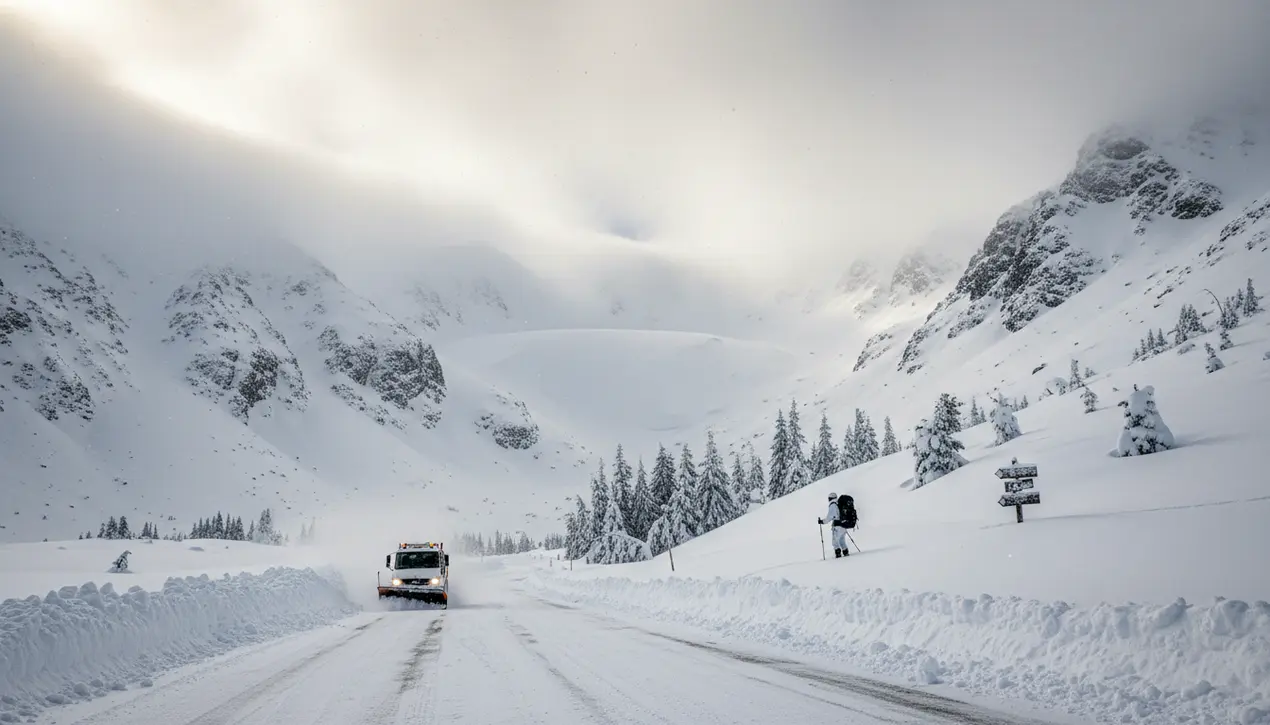
Otherweather & natural eventsExtreme Weather
Poland faces heavy snowfall and avalanche threats in south.
RA
Rachel Adams
17 hours ago7 min read
Southern and eastern Poland are currently in the grip of a significant winter onslaught, with heavy snowfall, sleet, and persistently negative temperatures transforming the landscape and testing the region's infrastructure. Meteorologists are forecasting accumulations of up to 20 centimeters in the most affected areas, a blanket of white that, while picturesque, brings with it a suite of serious ecological and societal challenges.This is not an isolated weather event but part of a broader, more troubling pattern of climatic instability that scientists have been tracking for decades. The immediate consequences are stark: transportation networks are faltering under the weight of the snow, with roads becoming treacherous and flight schedules thrown into disarray, while energy grids are strained as demand for heating surges.The most acute danger, however, is concentrated in the Tatra Mountains, where authorities have declared a level 2 avalanche danger. This rating signifies a 'moderate' risk, a technical term that belies the very real and present threat to human life.Avalanches in this region are a powerful reminder of nature's brute force, often triggered by a combination of new snow, wind-drifted slabs, and underlying weak layers in the snowpack. Historically, such conditions have led to tragic outcomes, underscoring the critical importance of heeding warnings from the Polish Avalanche Warning Service (TOPR), whose teams work tirelessly to monitor slope stability.The economic ripple effects are equally concerning, impacting local communities dependent on winter tourism; ski resorts may welcome the fresh powder, but the associated risks can deter all but the most experienced backcountry enthusiasts, creating a precarious balance between livelihood and safety. From an ecological perspective, this heavy snowfall plays a complex role.It acts as an insulating blanket for dormant flora and provides crucial water reserves in the form of snowpack for the spring thaw, yet such intense precipitation events are consistent with climate models that predict more volatile and extreme weather. The delicate alpine ecosystems of the Tatras, home to species like the Tatra chamois, are particularly vulnerable to these shifts. The situation demands a coordinated response, blending immediate crisis management with long-term strategies for climate adaptation, as Poland, like much of Europe, navigates an increasingly unpredictable relationship with its winter environment.
#Poland
#heavy snow
#avalanches
#Tatra Mountains
#weather warning
#featured
Stay Informed. Act Smarter.
Get weekly highlights, major headlines, and expert insights — then put your knowledge to work in our live prediction markets.
Comments
Loading comments...
© 2025 Outpoll Service LTD. All rights reserved.